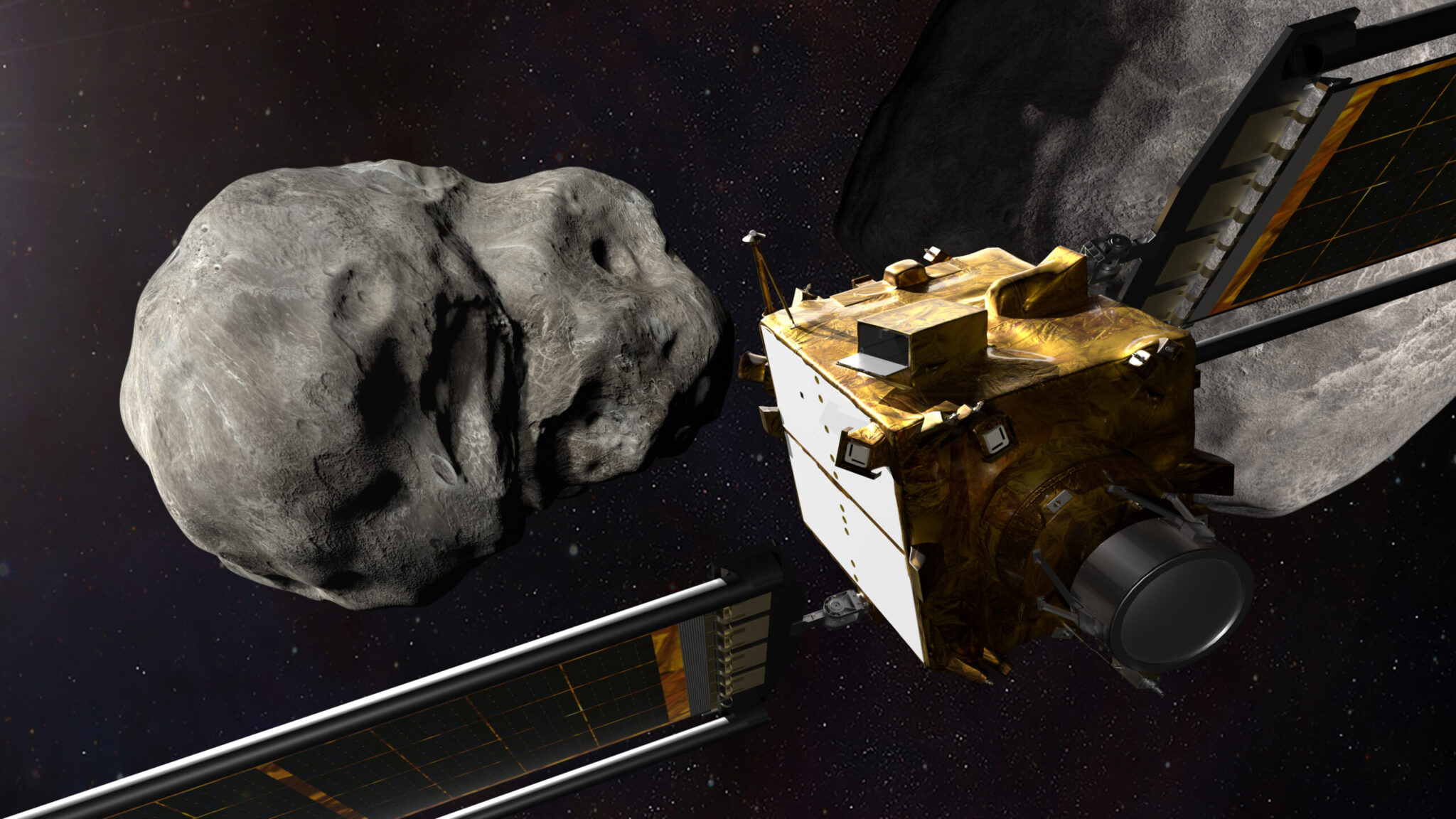IEEC and ICE-CSIC participate in the first NASA’s mission to deflect the course of asteroids

NASA expects DART to impact the asteroid Dimorphos, which poses no threat to Earth, on 27 September
The “Double Asteroid Redirection Test” (DART) mission, led by NASA and the Johns Hopkins Applied Physics Laboratory, was launched on 24 November 2021. DART will impact its target—the asteroid Dimorphos—slightly changing its orbit, next 27 September at 1:14 am CET.
This is the first planetary defence mission designed to change the course of an asteroid. The astrophysicist Josep M. Trigo-Rodríguez, member of the Institute of Space Studies of Catalonia (IEEC) and researcher of the Institute of Space Sciences (ICE-CSIC), has participated in DART’s scientific team since 2019.
The DART mission seeks to demonstrate the ability to use a kinetic impact method to deflect potentially dangerous asteroids. DART will conduct an experiment to change the trajectory and speed of an asteroid using the spacecraft itself without an explosive charge. Doing so, NASA will test planetary defence capabilities for future possible scenarios.
“With the DART mission we intend to better understand the key aspects that influence the transfer of kinetic momentum by a projectile without an explosive charge. It is a physical experiment to know the efficiency in which a kamikaze projectile excavates a crater in an asteroid, launching materials from the asteroid's surface in the opposite direction to the incoming projectile", says Trigo-Rodríguez. “The greater the efficiency of the process, the greater the deviation of the asteroid, but there is a multiplicative factor in the process of impact excavation that can be better understood from this experiment”, he adds.

Infographic showing the effect of DART's impact on the orbit of Dimorphos Credit: NASA/Johns Hopkins APL
The ICE-CSIC Meteorites, Minor Bodies and Planetary Science Group includes experts in the physical-chemical properties of asteroid and comet surface materials contributing profusely in this field.
Asteroids have a diverse structure, as a result of the continuous bombardment by projectiles since their formation. "The ICE-CSIC and the IEEC have carried out a series of experiments to better understand the mechanical properties of the regolith and the shock processes experienced by the asteroids to help understand their nature and mineralogy," says Dr.Trigo-Rodríguez.
DART’s target is the binary asteroid system composed of Didymos (with a 780-m diameter) and Dimorphos (with a 160-m diameter), which orbits Didymos. The system is located at 11 million km from Earth. Neither of them currently poses a threat to our planet, although the system is classified as a Potentially Hazardous Asteroid.
Didymos orbit has been studied in detail since its discovery in 1996 and it is considered as a prototype of the rocky bodies the Earth could face in the future.
DART mission research team will quantify the crater's excavation efficiency by studying the satellite's new period of revolution through photometric light curve studies using some of the world's largest telescopes. In turn, the team will compare DART’s kinetic impact with Dimorphos computer simulations of kinetic impacts on asteroids. In this way, the team will be able to assess the effectiveness of this mitigation approach, as well as the accuracy of the simulations to see how closely they reflect the behaviour of a real asteroid.
Hera, the European future of DART mission
“It should be taken into consideration that ESA’s Hera mission will follow DART. Therefore, it will be possible to accurately determine the point of impact and the consequences of crater excavation over the asteroid system (65803) Didymos”, points out Dr. Trigo-Rodríguez.
Hera will visit the binary asteroid Didymos as a follow-up of NASA’s DART mission to map Didymos and Dimorphos in high resolution. It is also planned to use CubeSat technologies to collect complementary information to mitigate future encounters with asteroids.
Press release prepared in collaboration with the Communication Office of the Institute of Space Sciences (ICE-CSIC).
Main Image
Illustration of the DART mission. Credit: NASA/Johns Hopkins APL
Links
– IEEC
– ICE-CSIC
– DART Mission
– Hera Mission
More information
This research is presented in a paper entitled “Shape Modeling of Dimorphos for the Double Asteroid Redirection Test (DART)”, by R. Terik Daly et al. [including J.M. Trigo-Rodríguez], which appeared in the journal The Planetary Science Journal on 8 September 2022.
The Institute of Space Studies of Catalonia (IEEC — Institut d’Estudis Espacials de Catalunya) promotes and coordinates space research and technology development in Catalonia for the benefit of society. IEEC fosters collaborations both locally and worldwide and is an efficient agent of knowledge, innovation and technology transfer. As a result of 25 years of high-quality research, done in collaboration with major international organisations, IEEC ranks among the best international research centers, focusing on areas such as: astrophysics, cosmology, planetary science, and Earth Observation. IEEC’s engineering division develops instrumentation for ground- and space-based projects, and has extensive experience in working with private or public organisations from the aerospace and other innovation sectors.
IEEC is a private non-profit foundation, governed by a Board of Trustees composed of Generalitat de Catalunya and four other institutions that each have a research unit, which together constitute the core of IEEC R&D activity: the Universitat de Barcelona (UB) with the research unit ICCUB — Institute of Cosmos Sciences; the Universitat Autònoma de Barcelona (UAB) with the research unit CERES — Center of Space Studies and Research; the Universitat Politècnica de Catalunya · BarcelonaTech (UPC) with the research unit CTE — Research Group in Space Sciences and Technologies; the Spanish Research Council (CSIC) with the research unit ICE — Institute of Space Sciences. The IEEC is a CERCA (Centres de Recerca de Catalunya) center.
Contacts
IEEC Communication Office
Barcelona, Spain
E-mail: comunicacio@ieec.cat
Lead Researcher at IEEC
Barcelona, Spain
Josep Maria Trigo-Rodríguez
Institute of Space Studies of Catalonia (IEEC)
Institution of Space Sciences (ICE-CSIC)
E-mail: trigo@ieec.cat, trigo@ice.csic.es
